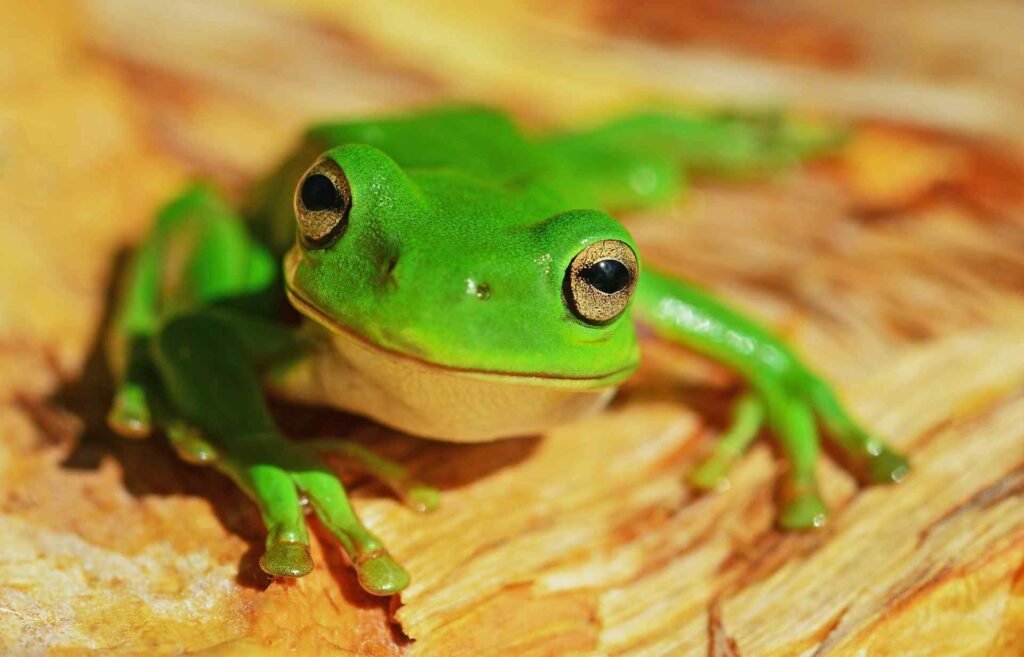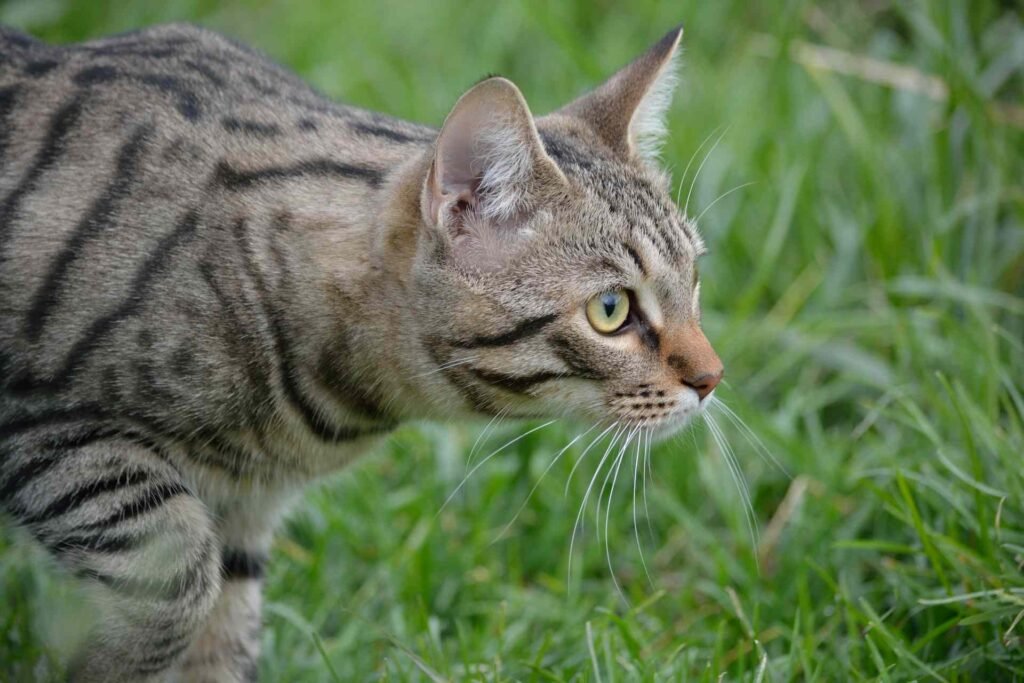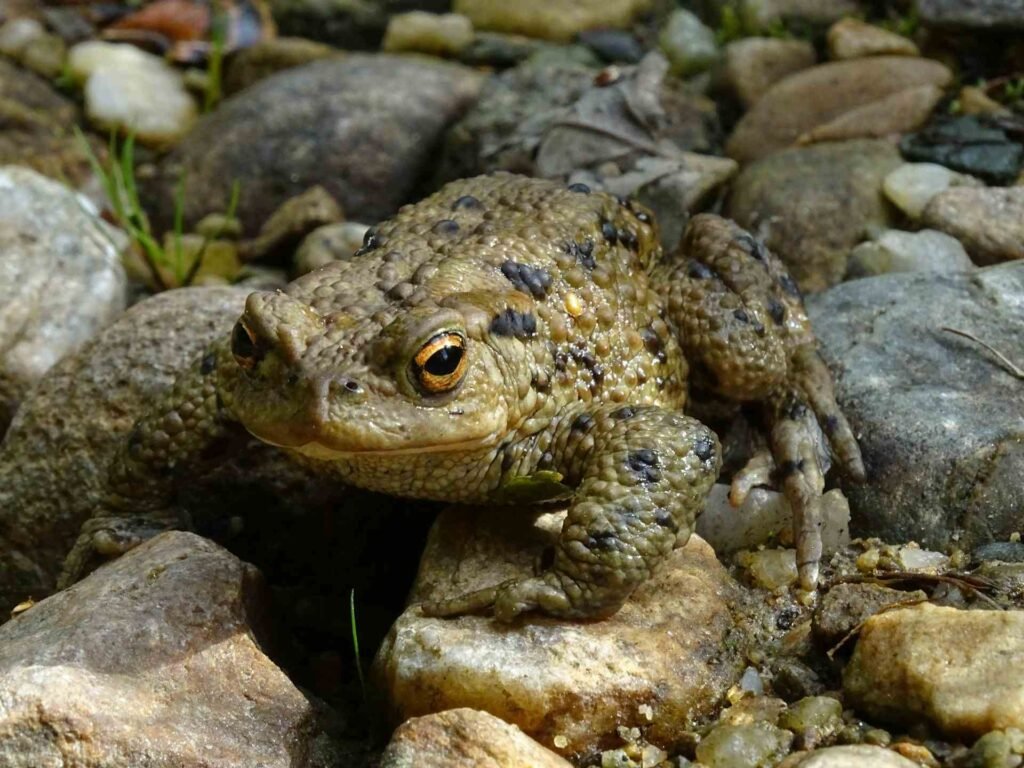Walking outside on a warm summer evening, you might catch sight of your feline friend crouched low near the garden pond, tail twitching with predatory focus. There, just inches away, sits an unsuspecting frog. This scene plays out in backyards across the world, leaving many cat owners wondering: do cats actually eat frogs, and should we be concerned?
The short answer is yes, cats do eat frogs, and this behavior taps into some of our feline friends’ most primal hunting instincts. But there’s much more to this story than meets the eye, and understanding the full picture can help keep your curious kitty safe while respecting their natural behaviors.

Understanding Your Cat’s Natural Hunting Instincts
Cats are born predators, equipped with lightning-fast reflexes and an insatiable curiosity about anything that moves. Even our well-fed indoor companions retain these powerful hunting drives that have kept their wild ancestors alive for thousands of years. Why cats meow at night often connects to these same instinctual behaviors, as many hunting activities naturally occur during twilight hours.
When a cat spots a frog, several factors make it an irresistible target. The hopping motion triggers their chase response, while the size makes frogs appear manageable as prey. Unlike larger animals that might pose a threat, frogs seem like perfect hunting practice for our domestic hunters.
This predatory behavior isn’t about hunger in most cases. Even cats with full food bowls will pursue frogs because the hunting sequence releases feel-good chemicals in their brains. It’s similar to how cats enjoy interactive play, providing mental stimulation and physical exercise that indoor cats especially crave.
Can Cats Safely Eat Frogs? The Reality Check
While cats can physically consume frogs, whether they should is an entirely different question. Most common garden frogs aren’t immediately toxic to cats, but they’re not exactly health food either. Frogs can carry parasites, bacteria, and other pathogens that might upset your cat’s digestive system or cause more serious health issues.
The bigger concern comes from the amphibian’s defense mechanisms. Many frogs secrete mild toxins through their skin as protection against predators. While these secretions rarely cause serious harm to cats, they can trigger drooling, pawing at the mouth, or temporary digestive upset.
Geography plays a crucial role here too. What’s relatively harmless in one region might be dangerous in another. Some areas have frog species with more potent defensive chemicals, making local knowledge essential for cat owners.
The Toad Difference: When Things Get Serious
Here’s where the conversation takes a more serious turn. While many people use “frog” and “toad” interchangeably, there are important distinctions every cat owner should understand. Do cats eat toads? Yes, but this presents significantly higher risks than their frog-hunting adventures.
Toads, particularly certain species like cane toads or Colorado River toads, produce much stronger toxins than most frogs. These chemicals can cause serious poisoning in cats, leading to symptoms like excessive drooling, difficulty breathing, seizures, or even heart problems. The toxins are concentrated in glands behind the toad’s head and can be absorbed through your cat’s mouth and gums.

Will cats eat toads despite these dangers? Unfortunately, yes. Cats don’t instinctively know which amphibians are dangerous and which are relatively safe. To them, a hopping toad looks just as appealing as a harmless garden frog.
Recognizing the Warning Signs
If your cat has had an encounter with any amphibian, watch for these symptoms that might indicate toxin exposure:
Immediate signs often appear within minutes and include excessive drooling, pawing at the face, or trying to rub their mouth on surfaces. You might notice your cat making unusual sounds or seeming distressed.
Digestive symptoms can develop over several hours, including vomiting, diarrhea, or loss of appetite. Some cats become lethargic or seek out unusual hiding spots when they’re not feeling well. Why cats hide under blankets sometimes relates to illness, though it can have many other causes too.
Severe reactions are thankfully rare but require immediate veterinary attention. These include difficulty breathing, tremors, seizures, or collapse. Never wait to see if severe symptoms improve on their own.
What About Frogspawn and Tadpoles?
Spring brings another amphibian-related curiosity for our feline friends. Do cats eat frogspawn or tadpoles? The answer is often yes, and while these early life stages of frogs pose fewer toxicity risks, they come with their own concerns.
Pond water containing frogspawn or tadpoles can harbor harmful bacteria, algae, or parasites. Cats who drink from or hunt in stagnant water sources might develop gastrointestinal issues or pick up unwanted microscopic passengers.
The gelatinous texture of frogspawn might also cause mild digestive upset in some cats, though it’s rarely serious. Tadpoles present similar risks to adult frogs but in a smaller, more concentrated package.
Creating a Safe Outdoor Environment
Rather than keeping your cat locked indoors permanently, there are practical ways to reduce amphibian encounters while still allowing outdoor enjoyment. Consider creating designated safe spaces in your yard where your cat can explore with minimal risk.
Water features like fountains or bird baths can satisfy your cat’s curiosity about water without the stagnant conditions that attract frogs and toads. Strategic placement of outdoor elements applies to garden design too, helping create environments that work for both you and your pets.
Evening supervision becomes especially important during warm months when amphibians are most active. Many cats naturally want to explore during dusk and dawn when frogs and toads are moving around. Understanding your cat’s behavior patterns can help you predict when they’re most likely to encounter amphibians.
| Season | Amphibian Activity | Risk Level | Preventive Actions |
|---|---|---|---|
| Spring | High (breeding season) | Moderate | Extra supervision, avoid ponds |
| Summer | Moderate (active hunting) | Low-Moderate | Evening monitoring |
| Fall | Low (preparing for winter) | Low | Standard precautions |
| Winter | Very Low (dormant) | Minimal | Routine awareness |
Indoor Alternatives for Natural Hunters
If amphibian encounters are a serious concern in your area, channeling your cat’s hunting instincts indoors becomes crucial. Providing adequate mental stimulation helps reduce the intense drive to hunt outdoors.
Interactive toys that mimic the erratic movements of frogs can satisfy many cats’ predatory needs. Feather wands, motorized mice, and puzzle feeders engage the same mental processes as hunting without the associated risks.
Some cats benefit from scheduled play sessions that tire them out before prime hunting hours. A well-exercised cat is less likely to spend evening hours prowling for amphibians in the garden.
When Your Cat Catches a Frog: Immediate Steps
Despite our best efforts, many cats will successfully catch frogs or toads at some point. If you discover your cat has eaten a frog, don’t panic, but do take some immediate precautions.
First, try to identify what type of amphibian was involved if possible. Take photos of any remains or the area where the encounter occurred. This information can be valuable if veterinary care becomes necessary.
Remove your cat from the area and bring them indoors for observation. Offer fresh water to help rinse any toxins from their mouth, though don’t force drinking if they seem reluctant.
Monitor closely for the next several hours, noting any changes in behavior, appetite, or bathroom habits. Cats communicate discomfort in subtle ways, so pay attention to body language and unusual behaviors.
The Nutrition Question: Do Cats Need Amphibians?
From a nutritional standpoint, frogs offer little that cats can’t get from properly formulated cat food. Wild amphibians are lean protein sources, but they lack the balanced nutrition our domestic cats need for optimal health.
More importantly, the risks associated with wild-caught prey generally outweigh any nutritional benefits. Proper feline nutrition focuses on consistent, safe food sources rather than variable wild prey.

Some cat owners worry that preventing natural hunting behaviors might harm their pet’s wellbeing, but this isn’t supported by feline behavior research. Cats can live completely fulfilling lives without ever catching wild prey, provided their other needs are met through play, environmental enrichment, and social interaction.
Regional Considerations and Seasonal Patterns
Where you live significantly impacts the likelihood and risks of cat-amphibian encounters. Urban areas typically have fewer dangerous species, while rural or subtropical regions might host more toxic varieties.
Seasonal patterns also matter tremendously. Spring brings breeding activity that makes amphibians more visible and active. Summer evening rains often trigger mass movements of frogs and toads, creating peak encounter times.
Research local wildlife in your area to understand what species your cat might encounter. Local veterinarians, wildlife agencies, or pet poison control hotlines can provide region-specific guidance about which amphibians pose the greatest risks.
Emergency Preparedness
Every cat owner in areas with potentially dangerous amphibians should have an emergency plan ready. Keep your veterinarian’s after-hours contact information easily accessible, along with the nearest emergency animal hospital.
Pet poison control hotlines provide 24/7 guidance for toxicity concerns. Having these numbers saved in your phone can save precious time during an emergency situation.
Consider keeping activated charcoal on hand if recommended by your veterinarian, though never administer any treatments without professional guidance first. What helps in one situation might be harmful in another.
FAQ
What should I do if my cat ate a frog?
Monitor your cat closely for signs of toxicity like excessive drooling, pawing at their mouth, or vomiting. Offer fresh water and contact your veterinarian if any unusual symptoms develop. Most garden frog encounters resolve without serious issues, but it’s always better to be cautious.
Are all frogs and toads dangerous to cats?
No, but determining which ones are safe requires local knowledge. Common garden frogs are generally less dangerous than toads, but even “safe” amphibians can carry parasites or bacteria. Some species like cane toads or Colorado River toads are significantly more toxic and pose serious health risks.
How can I stop my cat from hunting frogs and toads?
Complete prevention is challenging since it goes against natural instincts, but you can reduce encounters through supervised outdoor time, removing water sources that attract amphibians, and providing plenty of indoor enrichment to satisfy hunting drives through play.
Do indoor cats ever encounter amphibians?
Indoor cats typically have minimal amphibian exposure, but frogs or toads can occasionally enter homes through open doors, pet doors, or hiding in potted plants. Even indoor cats should be monitored if they show signs of having caught something unusual.
When is amphibian toxicity an emergency?
Seek immediate veterinary care if your cat shows difficulty breathing, tremors, seizures, excessive drooling that doesn’t stop within an hour, or any signs of collapse. These symptoms can indicate serious toxin exposure requiring professional treatment.
Conclusion
The relationship between cats and frogs is as old as cats themselves, rooted in instincts that have kept felines successful hunters for millennia. While we can’t completely eliminate these encounters, understanding the risks and taking sensible precautions helps keep our curious companions safe.
Remember that most cat-frog meetings end with nothing more dramatic than a confused amphibian and a proud hunter showing off their “prize.” The key is staying informed about local wildlife, watching for warning signs, and knowing when professional help is needed.
Your cat’s hunting prowess might occasionally lead them to amphibious adventures, but with a little knowledge and preparation, you can let them explore their world while keeping those inevitable frog tales from becoming genuine emergencies. After all, some of the best pet stories start with “So there we were in the garden when suddenly…”
Looking for more? Explore our Cat Health section for more posts like this, visit the Blog for fun and insightful reads, or browse our full Cat Category for everything feline-related, from care to comfort.
Disclaimer: This article is for informational purposes only and does not substitute for professional veterinary advice. Always consult your veterinarian for diagnosis and treatment tailored to your cat’s individual needs. Please verify current product information directly on the retailer’s site before purchasing.
References
- Can Cats Eat Frog? https://cancateat.org/en/search/frog
- Jekyll & Hyde. Cats and their Parasites. https://www.frogsafe.org.au/index.php/threats/cats-and-their-parasites
Check out our most recent articles!
- Cats and Snow: Why Some Love It and Others Don’tSnow isn’t just uncomfortable for many cats, it’s a complete sensory overload. From cold paw pads to wet fur and changed landscapes, winter challenges feline comfort in unexpected ways. Learn how to recognize stress signals and create cozy alternatives for snow-averse cats.
- Christmas Names for Cats: From Classic to Creative Holiday IdeasNaming your holiday cat goes beyond festive fun. Discover why Christmas-inspired names age beautifully, spark instant connections with fellow pet lovers, and capture the warmth cats bring to our homes during the most magical season of the year.
- How to Keep Your Cat From Drinking Christmas Tree WaterYour cat’s obsession with Christmas tree water isn’t just annoying, it’s genuinely dangerous. From harmful bacteria to toxic additives, that festive reservoir poses real health risks. Discover practical solutions that protect your pet without sacrificing holiday cheer.
- Best Cat Toys for Christmas: The Ultimate Guide to Holiday JoyNot all Christmas gifts end up under the tree, some get batted across the floor at 3 AM. Explore the wonderful world of holiday cat toys that match your feline’s personality, from plush companions for cuddlers to high-tech options for the eternally energetic.
- Are Fake Christmas Trees Safe for Cats? A Holiday Safety GuideThat beautiful Christmas tree might look festive to you, but to your cat, it’s an irresistible climbing gym with built-in toys. Find out whether artificial trees are truly safer for cats and discover the hidden dangers lurking in your holiday decorations.
- The Best Christmas Gifts for Cats That’ll Actually Get Used (Not Ignored)Not all Christmas gifts land on the nice list with our feline friends. Discover which presents actually spark joy in cats and which ones end up gathering dust under the couch by New Year’s Day.
- Do Cats Eat Less in Winter? How Cold Weather Affects Your Cat’s AppetiteWinter brings more than just cold weather, it can completely change your cat’s eating habits. From bored indoor cats to outdoor ferals fighting to survive, discover what’s really driving those appetite changes and how to respond appropriately.
- Are Humidifiers Good for Cats? A Complete Safety & Health GuideNot all humidifiers are cat-safe, and some common practices could be toxic. Learn why cool mist beats warm mist, why essential oils are dangerous for felines, and how proper humidity levels between 30-50% support your cat’s breathing and coat health.
- How to Protect Leather Furniture From Cats (Without Losing Your Mind)Leather furniture and cat claws seem like natural enemies, but they don’t have to be. Learn why your cat is drawn to that expensive couch in the first place, and how simple redirects can save your furniture while keeping your cat’s natural behaviors satisfied.
- The Best Material for Cat Bowls: Protect Your Cat from BacteriaStainless steel, ceramic, or plastic, which material keeps your cat healthiest? We break down the science behind cat bowl materials, revealing why some harbor bacteria and others last decades without compromising your feline’s wellbeing.










